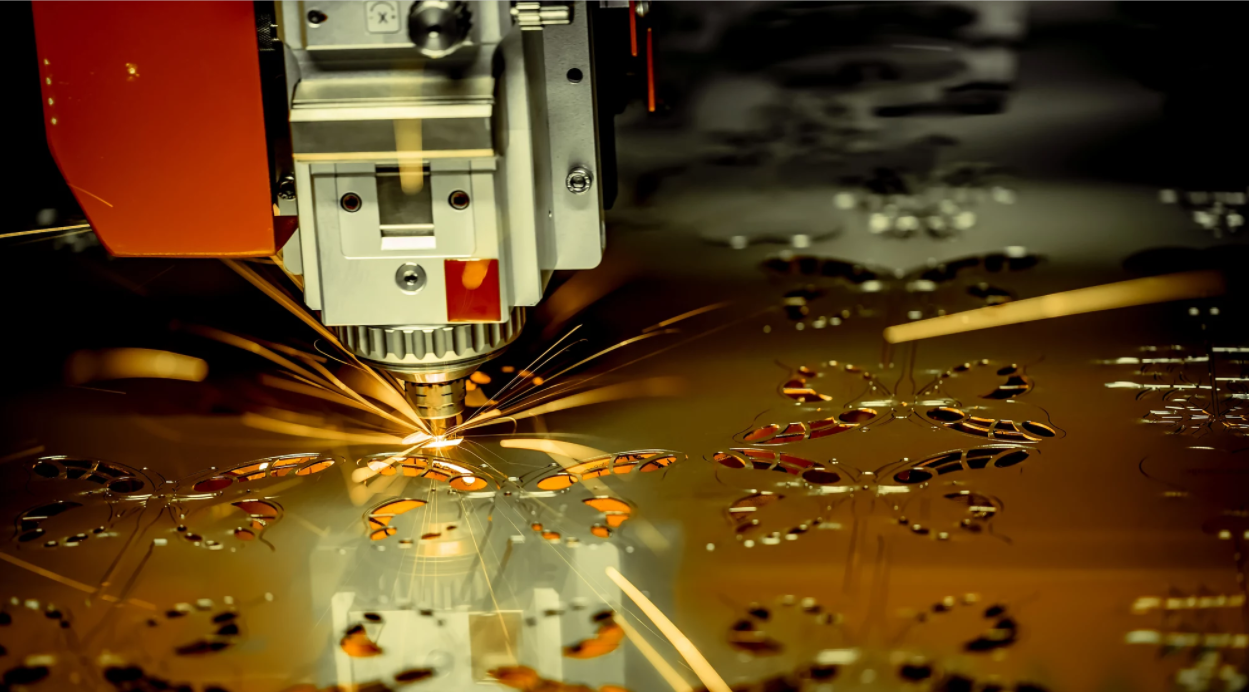Sheet Metal Fabrication
For low volume production:
If a part can be made from a piece of metal sheet by cutting and bending, then sheet metal processing can be applied. Most common methods are: first laser cut the sheet and then bend or punch it. Although Plasma cutting machine and water cutting machine can also handle the cutting job, but laser cutting is still the most popular and cost-effective way to handle the low volume sheet metal cutting.
Laser Cutting
Depends on the power of the cutting machine and material it works with, laser cutting can penetrate sheet metal with thickness from 0.5mm to 20mm. Like one coin has two sides, laser cutting has its own disadvantages and advantages.
Disadvantages of Laser Cutting
1)The cut edge is not 100% vertical. Laser has an angle of divergence, this cause an angle on the cut edge and hence less precision on thick sheet cutting.
2)For some old model laser cutting machines, copper cutting can be problematic be those machines use copper to make their reflection mirror.
Advantages of Laser Cutting
1)It is a lot cheaper than CNC.
2)It can make very small diameter holes (not deep but small), theoretically up to 0.01mm holes can be made.

For Large Volume Production
For larger volume production, sheet metal molding is applied.
Sheets Metal Molding
Although some sheet metal moldings are used for metal sheets over 8 or even 10mm, but usually we call a ‘sheet’ metal when its thickness is below 6mm. Sheets metal molding is probably the most diversified molding method, it bends, stamps, cuts, rolls, perforates and rivets metal sheets. There are many different ways to mold sheet metal, each with its own set of equipment, costs and processes. Sheet metal can be formed by bending, curling, rolling, spinning, stamping, laser cutting, ironing, perforating and much more. The process or processes used (in many cases, more than one process is needed) typically depends on the product itself. Aluminum, brass, copper, steel sheets can all be molded into various shapes.
Although in average simple sheet metal mold is cheaper than injection molds but still a good number of production volume is needed to reach a good cost-effeciency. When volume of a production reaches a few thousand and more, we start to take sheets metal molding into consideration.
Other Aspects for Sheet Metal Fabrication
Follow the cutting, metal shearing, bending and punching could be applied. For complicated shapes, CNC turning, punching, CNC press brake machine are used. Harder material need a rather larger radius to be bent. Too sharp of the bending angle can cause crack or break. Same material at different harden status perform very differently when bending, for instance, 6061 H5 is much easier to be bent than 6061 T6.
If you have certain questions concerning your sheet metal projects, please feel free to consult engineers from Zemaker.
